5 Top Tips On Controlling Humidity During The Growing Period
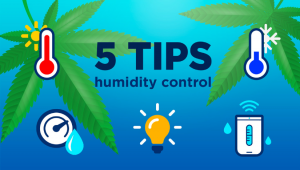
- 1. The optimum conditions
- 2. Using hygrometers
- 3. Humidity control
- 3. a. Humidifier
- 3. b. Dehumidifier
- 3. c. What can happen if the humidity drops below the desired levels?
- 3. d. Issues associated with bad humidity management
- 4. Keep fans on 24/7
- 5. Supplementing with co2
- 6. Running lights at night-time
- 7. What to avoid when growing in the vegetative phase?
- 8. The top 3 fast buds strains for challenging conditions
- 9. In conclusion
The growing period describes the stage of a Cannabis plant’s life cycle, where the amount of lighting received is around 18 hours. As we attempt to replicate Spring indoors, we must also do our very best to replicate the optimum temperature and humidity levels. Regulating humidity is a true balancing act. With too little moisture in the air, leaves can become too dry, causing them to crisp and rob them of optimal function. However, the opposite is also detrimental.
Too much humidity can increase the chances of fungal disease on feminized seeds; different types of mold thrive in wet and stagnant climates. These pathogens become especially problematic during the flowering stages of the growing cycle. Therefore, to grow the best weed possible, you need to become skilled at controlling humidity at different periods of the cultivation timeline. Below Fast Buds give 5 top tips on what to consider and how to create the ideal environment inside your garden.
1. The Optimum Conditions
During the vegetative phase, the optimum conditions for Cannabis plants are high humidity levels and a warm temperature between 22-25 degrees Celsius. During this stage, plants will focus all of their energy on producing thick stems, bushy foliage and as many new growth sites as possible.
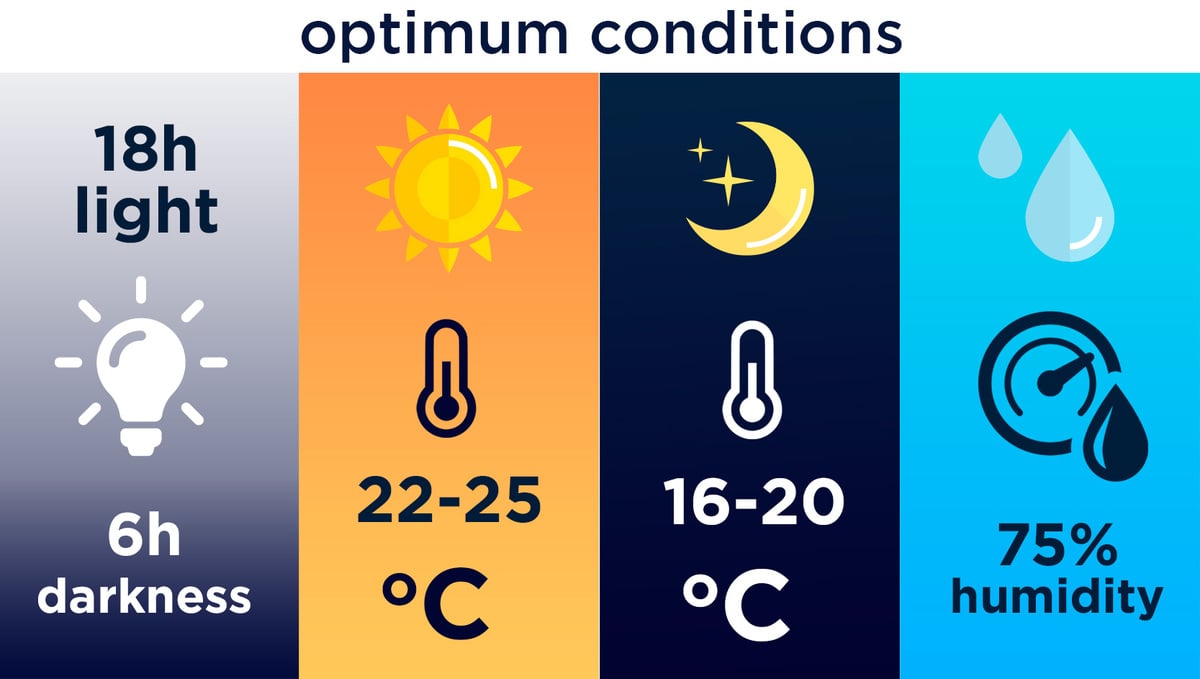
During this time, the large fan leaves benefit from relatively high moisture levels in the air. This helps to prevent their leaves from drying out too much, which keeps them functioning optimally. Considering leaves are the storehouses of the photosynthetic apparatus, keeping them in tip-top shape during this time will benefit your plant in myriad ways.
- Light Cycle - 18 hours light / 6 hours darkness
- Day Time Temperature - 22-25 degrees Celsius
- Night Time Temperature - 16-20 degrees Celsius
- Humidity Levels - 75%
2. Using Hygrometers
Having the ability to accurately measure the indoor temperature and relative humidity levels your plants are receiving is one way to safely monitor your garden. A hygrometer is a gadget that will give a data reading of the temperature and humidity present, with most displaying the lowest and highest temperature change so you can see the difference within a 24-hour period. Our top tip here is to invest in a good hygrometer and to even keep a spare one around in case of emergencies. After you have set one up in your garden, you are at least in a position where you can then dictate the optimum conditions using a humidifier or dehumidifier depending on the situation. They are not expensive and will be the difference between a conscious grower or one who is hitting and hoping.
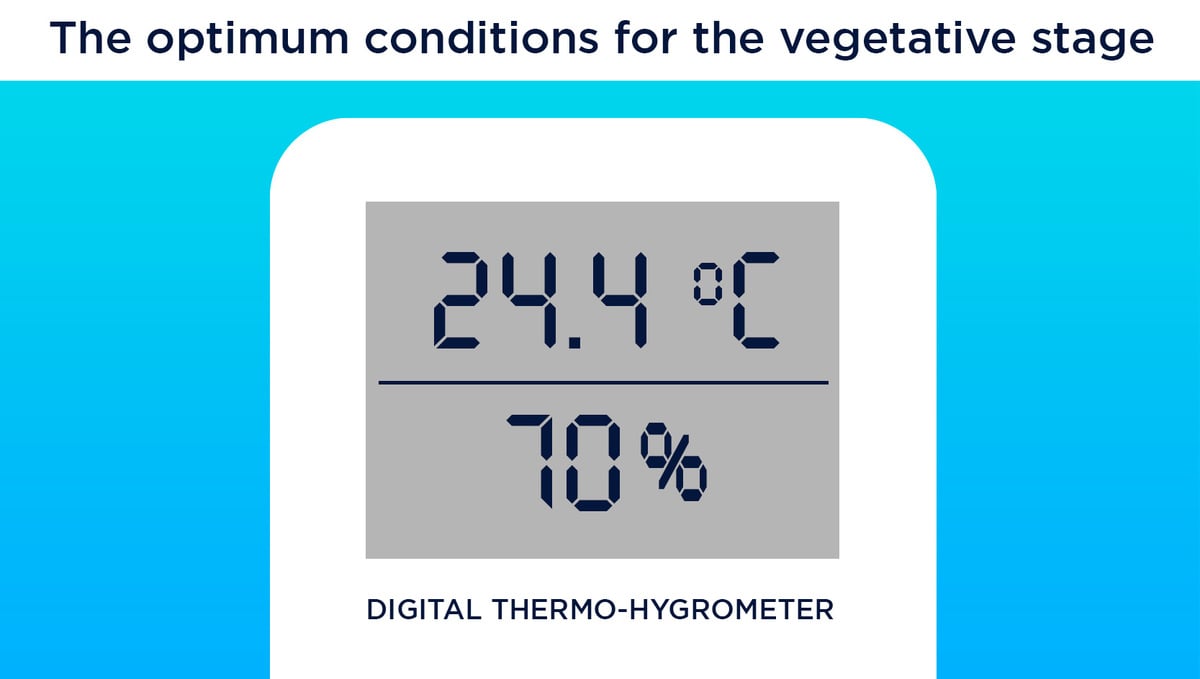
No matter where you’re growing cannabis, you can use these devices to keep track of these variables. Place them in your polytunnel, greenhouse, indoor grow tent, or even out in your guerilla growing location to closely monitor both temperature and humidity throughout all stages of the growing cycle. Not only do these devices tell you when things are going right, but they’ll inform you when humidity is too high or too low—allowing you to take action before your plant starts to experience detrimental outcomes.
3. Humidity Control
As we know that during the growing phase, Cannabis plants prefer high humidity levels around 70%, with a comfortable temperature of 24 degrees Celsius. If you are choosing to supplement with Carbon Dioxide, then consideration must be taken regarding an increase in temperature above 25 degrees Celsius. Our top tip here is to increase or decrease the relative humidity present, by using either a humidifier or dehumidifier. Both will allow you to control the environment until you meet the ideal setting, with many growers opting to connect the device to a temperature controller that will kick in and off when required.
Using these pieces of equipment, you have two primary options when it comes to controlling humidity. If you have access to your plants every day and have ample time to check on them frequently, then you can simply operate these machines manually after taking readings from your hygrometer. In contrast, if you’re often away from your plants for a long period of time, you can create an automated system that will automatically kick in when humidity levels get too high or too low. By hooking your humidifier and dehumidifier up to a sensor and a controller, you’ll create a system that doesn’t need your constant attention and intervention.
Humidifier
A humidifier is an electrical device that sprays mist into the air to increase humidity. Normally it's placed by intake fans or left inside a garden during the 18/6 period. It is ideal for when the fresh air from outside is too dry, or the humidity levels are below the desired 60-75% mark.
Dehumidifier
An electrical device that sucks air through a vacuum and removes the moisture from the air. Usually used during the flowering period of 12/12 in order to reduce moisture levels to the safe zone of 30-40%.
What Can Happen if the Humidity Drops Below the Desired Levels?
Growing cannabis is all about balance. When the humidity drops below the percentage for optimal growth the crop will try to balance out the scales by releasing more of the captured moisture than is recommended. This, in turn, means that the plants themselves have less internal moisture which is not what we want at all. After initially releasing extra moisture, the plant will quickly realize that it is in danger of drying out, and close off the pores that allow for air and moisture exchange.
This is a great survival tactic, but it comes with one marked downside. The amount of CO2 that the plant is able to receive drops. This can quickly result in a range of issues, and in extreme cases, it can kill the plant. When the humidity levels are correct, the plant will automatically open and close her pores allowing for the correct proportion of moisture and gas exchange. This leads to optimal growth patterns. Some top tips for controlling and stabilizing the humidity levels in your grow space are:
- Seal your grow area off entirely, and make sure it is well insulated. A high-end grow tent takes care of this for you, but beware of cheap options that have flooded the online market. Always spend a little more on your growing equipment, which includes the room itself.
- Air conditioning is your friend. An AC unit can help immensely with humidity control.
- Invest in good-quality hygrometers.
- Make sure you have the drainage sorted. Sitting water is the number one enemy of a good grow, and can lead to a wide range of issues other than humidity control.
- Ventilation is key. Always invest in a slightly larger exhaust fan than you may think is necessary, as there will be times that you will want the extra oomph when the humidity levels peak. Oscillating fans help prevent pockets of humid air from becoming trapped in the canopy.
Issues Associated with Bad Humidity Management
There are a few issues directly associated with poor humidity control.
Powdery Mildew
This fungal growth is one of the more common issues that both new and experienced growers face, as young plants thrive in an environment where the relative humidity is quite high. To combat this issue before it starts, make sure the air exchange in your grow area is sufficient by using multiple oscillating fans to move the canopy air and a nice, bulky exhaust fan to ensure correct air exchange.
Nutrient Uptake Issues
Plants receive nutrients through the feed water that we give them. But, if the humidity is too high, the plant will begin to decrease the amount of water she uptakes through her root system, which can lead to nutrient deficiency problems. On the other hand, if the air is too dry, the plant will want to drink more which can lead to overfeeding and nutrient burn.
Bud Rot
Bud rot and mold are the banes of any cannabis cultivator’s existence, and one of the most devastating things that can afflict a crop. It can be really hard to notice, and by the time you do the whole plant (or crop) could be totally ruined. Almost all experienced growers will have some story of harvesting a plant with huge, impressively dense colas only to find that they are full of mold and are completely unusable.
Decelerated Growth and Diminishes Yields
While younger plants love a growing area with higher humidity, once the plants reach the vegetative stage this can severely decrease the rate of growth which will, in turn, reduce the size of the yield. For the best harvest results make sure to keep the humidity levels at the optimal levels throughout the entire life cycle of the plant.
4. Keep Fans on 24/7
One bad habit that some beginner growers can develop is switching everything off at night. Once the lights go out, everything else should remain consistent and for the capacity and airflow inside to stay as it was when the lights were on. Encouraging a grow room that houses stagnant air is only asking for problems with airborne pathogens such as powdery mildew. Our top tip here is to keep only the grow lights on a set timer. Your intake fan, exhaust fan, carbon filter, oscillating fans, and wall fans should be kept on permanently. By doing this, the threat of pathogens is removed and the airflow around the bottoms and tops of plants remains consistent.
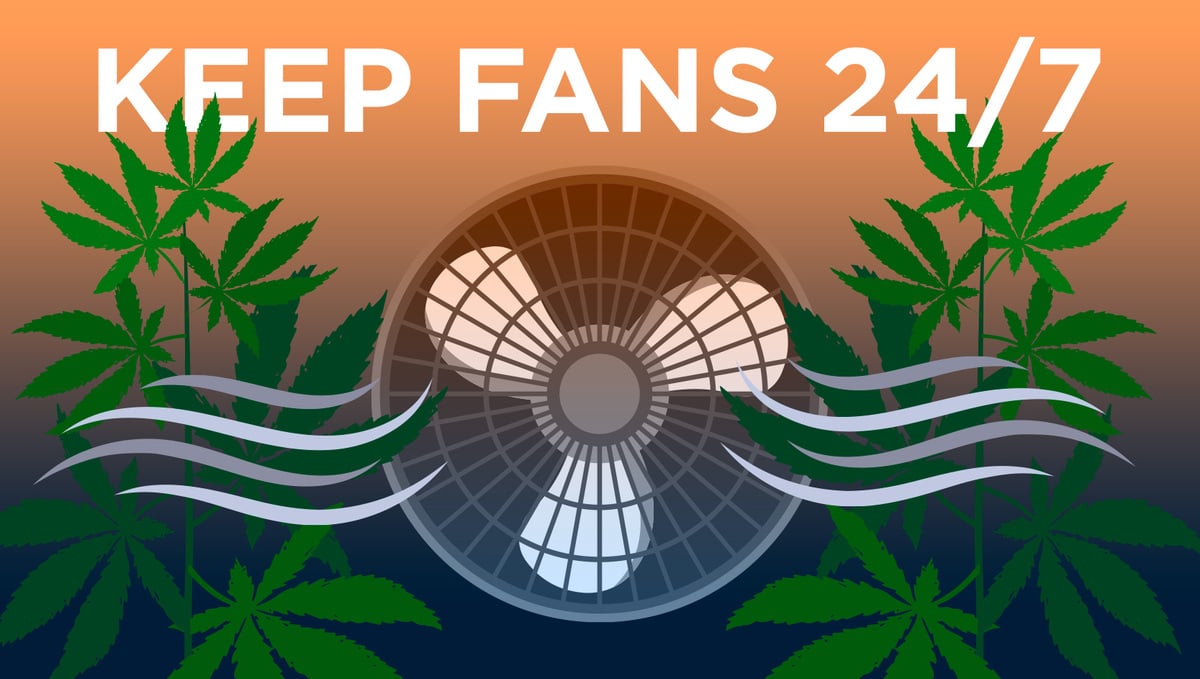
The following should be left ON during the darkness period:
- Exhaust fan + carbon filter
- Intake fan
- Oscillating Fans
- Wall Fans
5. Supplementing With CO2
Plants require intense light, a food source and Carbon Dioxide, in order to produce sugars for the roots and exchange for Oxygen. Despite being told that the safe zone for Cannabis plants is 24 degrees Celsius, this is highly debatable when considering some of the tropical climates cultivars can handle outdoors. When supplementing indoor Cannabis plants with CO2, it is necessary to work in an environment that exceeds 25 degrees Celsius and in some cases up to 30 degrees Celsius.
The reason is that stomata on a leaf that is responsible for the uptake and transfer of CO2, function best when temperatures are close to 30 degrees Celsius. Introducing CO2 into the garden is better suited for those with a thorough understanding of what PPM is required at what rates, according to the nutrient and amount of lighting. It is good practice to know that Cannabis plants do not utilize CO2 during darkness and will begin one hour after lights are on.
6. Running Lights At Night-Time
It is common practice for a grower to run their lights at night time, thanks to advantages associated such as lower temperatures, higher humidity, and a cheaper electricity tariff. Choosing to have the 6-hour darkness period during the hottest points of the day, will allow the fresh air to be pulled in to be much cooler, allowing for better temperature control management. Our top tip here is to use this technique especially if you are growing plants indoors under 18/6 in the Summertime. The colder the air you are bringing into the grow room, will allow your plants to transpire water.
7. What To Avoid When Growing In The Vegetative Phase?
- Overwatering your plants can cause humidity levels to spike, due to the buildup of excess water. As the Cannabis plants struggle to transpire properly, not only will the rate of growth cease, but the relative humidity will remain constantly high.
- Try not to water plants late at night prior to lights going out. It is better to feed your plants on a consistent basis such as one hour after lights are on every day. This is also the time when stomata begin to function and uptake available CO2.
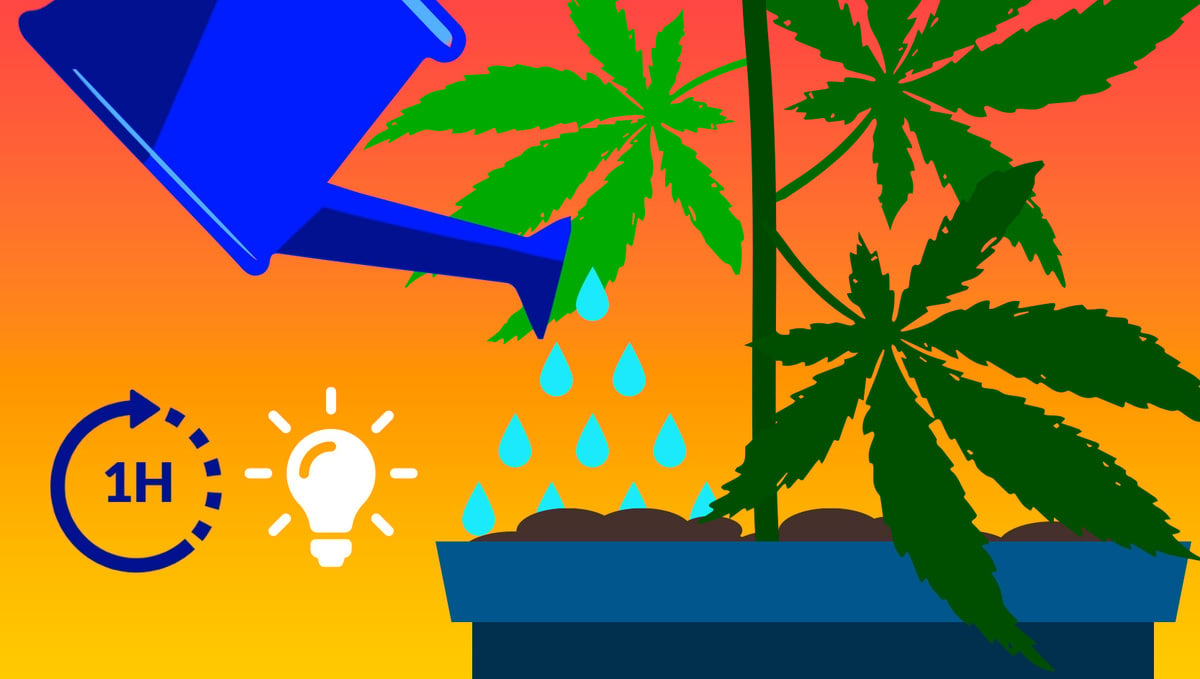
- Never create an environment where there is no fresh air being circulated around the plants. This is important during when lights are on and especially lights off. When flowering Cannabis, creating such an environment will guarantee mold and other plant diseases.
- Powdery mildew will appear overnight in some cases and what looks like a harmless white powder is, in fact, a pathogen that has attached itself to the leaf tissue. When you see signs of mildew, this is a clear indication the air in the grow room has become stagnant encouraging anaerobic bacteria and airborne pathogens to thrive.
- Avoid not using equipment such as hygrometers and hoping the outside fresh air is perfect. During dry seasons, indoor-grown Cannabis plants can suffer tremendously causing a bad start.
8. The Top 3 Fast Buds Strains For Challenging Conditions
Working with highly resistant cultivars can be the difference between losing a crop, and growing some top-shelf flowers. Below are our 3 best strains for those facing challenging conditions.
An excellent choice for indoor growing, where high humidity can influence the flowering room. This strain is highly resistant to mold and is a foolproof cultivar.
For flowering in a naturally humid climate, a wise choice would be this sativa dominant strain. She can take the heat and humidity and will thrive.
Growers who experience dry climates will find comfort with this Amnesia Z Auto. Highly resistant and a rock solid performer.
9. In Conclusion
It is important to provide a warm and wet environment for Cannabis seedlings or clones. As plants mature in size and progress closer to the flowering stage, the level of relative humidity can be slowly reduced toward the 30% mark. If you are working with CO2, remember stomata function better in high humidity and temperatures above 27 degrees Celsius and above, and won't open until the first 60 minutes of the lights being turned on. Good luck with growing the healthiest and best plants possible!









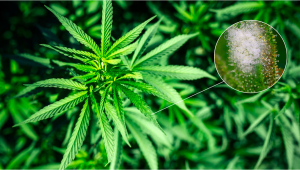
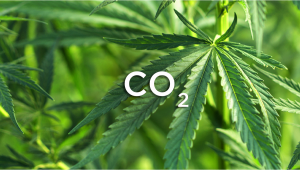
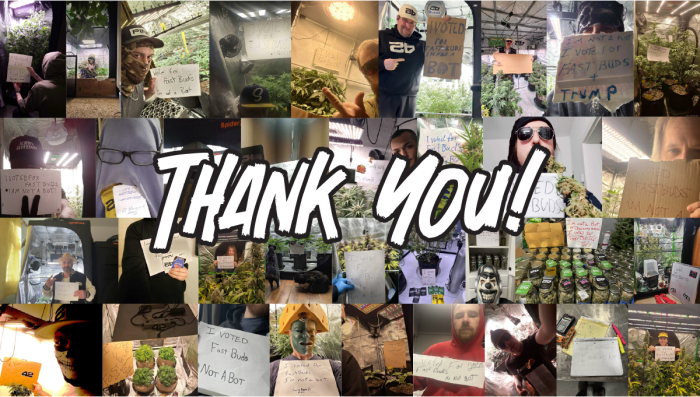

Comments